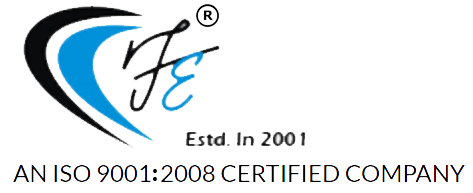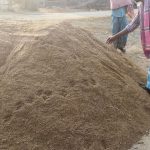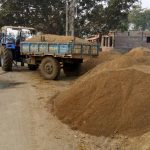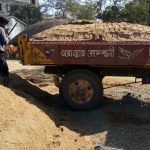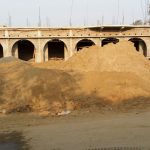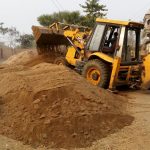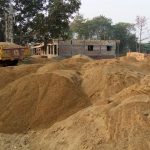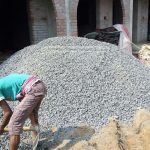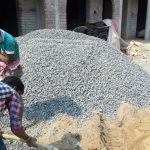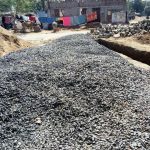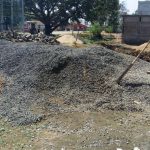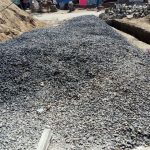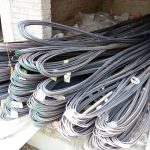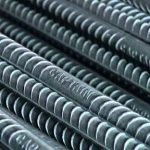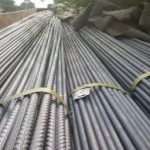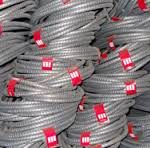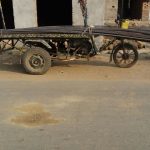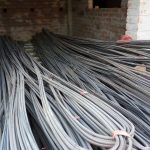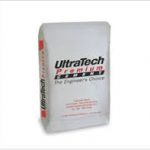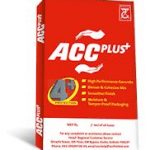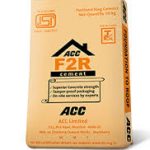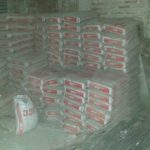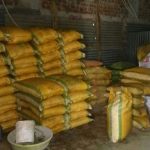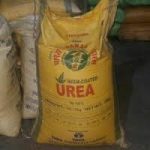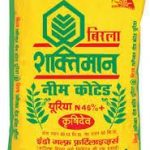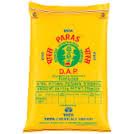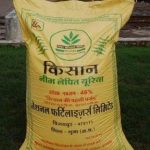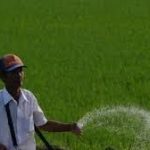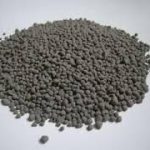Trading
River Sand, Aggregate Metal Stones, Iron Steel, TMT Bar, ACC Cement, Ultratech Cement and Fertilizer Trading Business
We are engaged in trading, distributing and supplying excellent quality River Sand, Aggregate Metal Stone, Iron Steel, TMT Bar, ACC Cement, Ultratech Cement and Fertilizer Trading Business
River Sand
Sand is a naturally occurring granular material composed of finely divided rock and mineral particles. It is defined by size, being finer than gravel and coarser than silt. Sand can also refer to a textural class of soil or soil type; i.e. a soil containing more than 85% sand-sized particles by mass.
The composition of sand varies, depending on the local rock sources and conditions, but the most common constituent of sand in inland continental settings and non-tropicalcoastal settings is silica (silicon dioxide, or SiO2), usually in the form of quartz. The second most common type of sand is calcium carbonate, for example aragonite, which has mostly been created, over the past half billion years, by various forms of life, like coral and shellfish. For example, it is the primary form of sand apparent in areas where reefs have dominated the ecosystem for millions of years like the Caribbean.
Sand is a non renewable resource over human timescales, and sand suitable for making concrete is in high demand.
Only some sands are suitable for the construction industry, for example for making concrete. Because of the growth of population and of cities and the consequent construction activity there is a huge demand for these special kinds of sand, and natural sources are running low. In 2012 French director Denis Delestrac made a documentary called “Sand Wars” about the impact of the lack of construction sand. It shows the ecological and economic effects of both legal and illegal trade in construction sand.
Sand’s many uses require a significant dredging industry, raising environmental concerns over fish depletion, landslides, and flooding. Countries such as China, Indonesia, Malaysia and Cambodia ban sand exports, citing these issues as a major factor. It is estimated that the annual consumption of sand and gravel is 40 billion tons and sand is a $70 billion global industry.
Aggregate Metal Stones
Crushed stone or angular rock is a form of construction aggregate, typically produced by mining a suitable rock deposit and breaking the removed rock down to the desired size using crushers. It is distinct from gravel which is produced by natural processes of weathering and erosion, and typically has a more rounded shape.
Angular crushed stone is the key material for macadam road construction which depends on the interlocking of the individual stones’ angular faces for its strength. Crushed natural stone is also used similarly without a binder for riprap, railroad track ballast, and filter stone. It may also be used with a binder in a composite material such as concrete, tarmac, or asphalt concrete.
Crushed stone is one of the most accessible natural resources, and is a major basic raw material used by construction, agriculture, and other industries. Despite the low value of its basic products, the crushed stone industry is a major contributor to and an indicator of the economic well-being of a nation. The demand for crushed stone is determined mostly by the level of construction activity, and, therefore, the demand for construction materials.
Stone resources of the world are very large. High-purity limestone and dolomite suitable for specialty uses are limited in many geographic areas. Crushed stone substitutes for roadbuilding include sand and gravel, and slag. Substitutes for crushed stone used as construction aggregates include sand and gravel, iron and steel slag, sintered or expanded clay or shale, and perlite or vermiculite.
Iron Steel and TMT Bar
A steel building is a metal structure fabricated with steel for the internal support and for exterior cladding, as opposed to steel framed buildings which generally use other materials for floors, walls, and external envelope. Steel buildings are used for a variety of purposes including storage, work spaces and living accommodation. They are classified into specific types depending on how they are used.
Some common types of steel buildings are “straight-walled” and “arch,” or Nissen or Quonset hut. Further, the structural type may be classed as clear span or multiple span. A clear span building does not have structural supports (e.g. columns) in the interior occupied space.
Straight-walled and arch type refer to the outside shape of the building. More generally, these are both structural arch forms if they rely on a rigid frame structure. However, curved roof structures are typically associated with the arch term.
Steel arch buildings may be cost efficient for specific applications. They are commonly used in the agricultural industry. Straight-walled buildings provide more usable space when compared to arch buildings. They are also easier to blend into existing architecture. Straight-walled buildings are commonly used for commercial, industrial, and many other occupancy types.
Clear span refers to the internal construction. Clear span steel buildings utilize large overhead support beams, thus reducing the need for internal supporting columns. Clear span steel buildings tend to be less cost efficient than structures with interior columns. However, other practical considerations may influence the selection of framing style such as an occupancy where interior structural obstructions are undesirable (e.g. aircraft hangars or sport arenas).
Long Bay buildings are designed for use in bay spans of over 35′. They use prefabricated metal frames combined with conventional joists to provide larger openings and clearances in buildings.
Building portions that are shop assembled prior to shipment to site are commonly referenced as prefabricated. The smaller steel buildings tend to be prefabricated or simple enough to be constructed by anyone. Prefabrication offers the benefits of being less costly than traditional methods and is more environmentally friendly (since no waste is produced on-site). The larger steel buildings require skilled construction workers, such as ironworkers, to ensure proper and safe assembly.
There are five main types of structural components that make up a steel frame – tension members, compression members, bending members, combined force members and their connections. Tension members are usually found as web and chord members in trusses and open web steel joists. Ideally tension members carry tensile forces, or pulling forces, only and its end connections are assumed to be pinned. Pin connections prevent any moment(rotation) or shear forces from being applied to the member. Compression members are also considered as columns, struts, or posts. They are vertical members or web and chord members in trusses and joists that are in compression or being squished. Bending members are also known as beams, girders, joists, spandrels, purlins, lintels, and girts. Each of these members have their own structural application, but typically bending members will carry bending moments and shear forces as primary loads and axial forces and torsion as secondary loads. Combined force members are commonly known as beam-columns and are subjected to bending and axial compression. Connections are what bring the entire building together. They join these members together and must ensure that they function together as one unit.
ACC Cement and Ultratech Cement
Cement is the glue that holds the concrete together, and is therefore critical for meeting society’s needs of housing and basic infrastructure such as bridges, roads, water treatment facilities, schools and hospitals. Concrete is the second1 most consumed material after water, with nearly three tonnes used annually for each person on the planet. Being one of the basic elements for setting up strong and healthy infrastructure, Cement plays a crucial role in economic development of any country. Having more than a hundred and fifty years history, it has been used extensively in construction of anything, from a small building to a mammoth multipurpose project. The manufacturing process of cement consists of mixing, drying and grinding of limestone, clay and silica into a composite mass. The mixture is then heated and burnt in a pre-heater and kiln to be cooled in an air-cooling system to form clinker, which is the semi-finished form. This clinker is cooled by air and subsequently ground with gypsum to form cement. There are three types of processes to form cement – the wet, semi-dry and dry processes. In the wet/semi-dry process, raw material is produced by mixing limestone and water (called slurry) and blending it with soft clay. In the dry process technology, crushed limestone and raw materials are ground and mixed together without the addition of water. The dry and semi-wet processes are more fuel-efficient. The wet process requires 0.28 tonnes of coal and 110 kWh of power to manufacture one tonne of cement, whereas the dry process requires only 0.18 tonnes of coal and 100 kWh of power. There are different varieties of cement based on different compositions according to specific end uses, namely, Ordinary Portland Cement, Portland Pozzolana Cement, White Cement, Portland Blast Furnace Slag Cement and Specialised Cement. The basic difference lies in the percentage of clinker used.
Fertilizer
Fertilizers enhance the growth of plants. This goal is met in two ways, the traditional one being additives that provide nutrients. The second mode by which some fertilizers act is to enhance the effectiveness of the soil by modifying its water retention and aeration. This article, like many on fertilizers, emphasises the nutritional aspect. Fertilizers typically provide, in varying proportions:
- Three main macronutrients:
- Nitrogen(N): leaf growth;
- Phosphorus(P): Development of roots, flowers, seeds, fruit;
- Potassium(K): Strong stem growth, movement of water in plants, promotion of flowering and fruiting;
- Three secondary macronutrients: calcium(Ca), magnesium(Mg), and sulphur(S).
- Micronutrients: copper(Cu), iron(Fe), manganese(Mn), Molybdenum(Mo), zinc(Zn), boron(B), and of occasional significance there are silicon(Si), cobalt(Co), and vanadium(V) plus rare mineral catalysts.
The nutrients required for healthy plant life are classified according to the elements, but the elements are not used as fertilizers. Instead compounds containing these elements are the basis of fertilisers. The macronutrients are consumed in larger quantities and are present in plant tissue in quantities from 0.15% to 6.0% on a dry matter (DM) (0% moisture) basis. Plants are made up of four main elements: hydrogen, oxygen, carbon, and nitrogen. Carbon, hydrogen and oxygen are widely available as water and carbon dioxide. Although nitrogen makes up most of the atmosphere, it is in a form that is unavailable to plants. Nitrogen is the most important fertilizer since nitrogen is present in proteins, DNA and other components (e.g., chlorophyll). To be nutritious to plants, nitrogen must be made available in a “fixed” form. Only some bacteria and their host plants (notably legumes) can fix atmospheric nitrogen (N2) by converting it to ammonia. Phosphate is required for the production of DNA and ATP, the main energy carrier in cells, as well as certain lipids.
Micronutrients are consumed in smaller quantities and are present in plant tissue on the order of parts-per-million (ppm), ranging from 0.15 to 400 ppm DM, or less than 0.04% DM. These elements are often present at the active sites of enzymes that carry out the plant’s metabolism. Because these elements enable catalysts (enzymes) their impact far exceeds their weight percentage.
LOOKS INTERESTING ?
GET IN TOUCH
